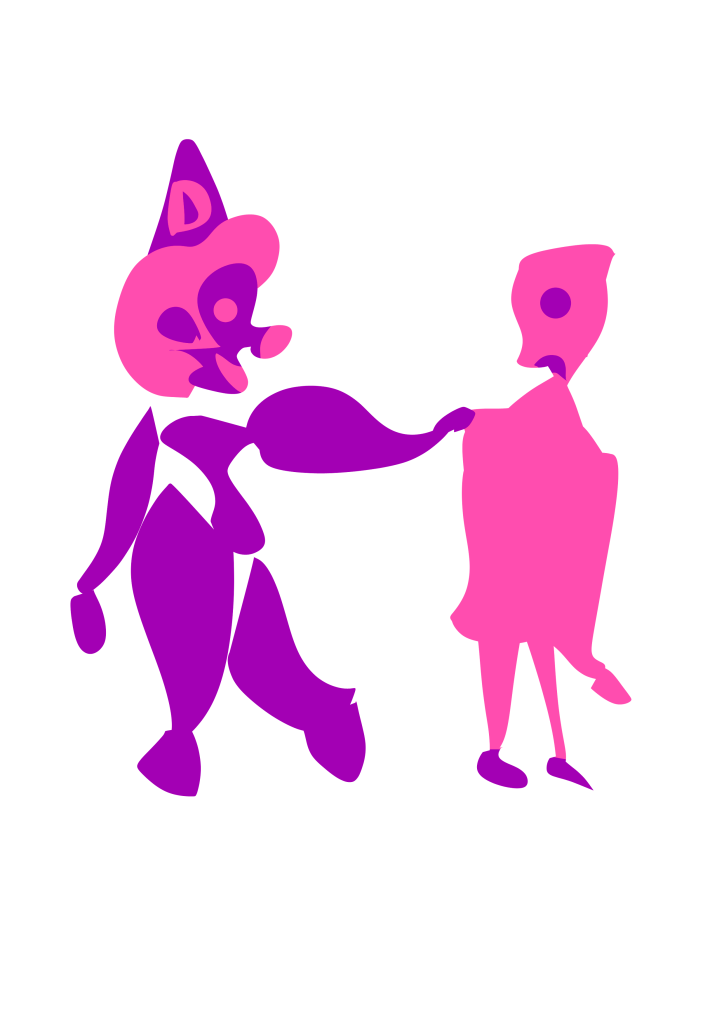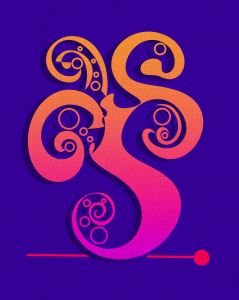All of these posters can be seen on the collections page for the London Transport Museum:
https://www.ltmuseum.co.uk/collections
Lovingly put together, a treat of festive fun, this poster parade (art gallery) celebrates the many faces of winter. Here is my commentary on each of the posters. These views are my own personal views and are not endorsed by the organisation.
1. Anna Hymaas ‘Winter Fun – Skating’ (2016)
This shows ice skating at Somerset House. When I went there with someone, that was the highlight of my time with them and one of the highlights of my life. It was snowing. We had such fun there together. And then we had hot chocolate afterwards which I bought for us. It was a wonderful feeling – I felt like I was in a movie. It was the happiest time of my life. I felt so lucky to be there with us both.
The poster is interesting formally because there are three main formal variations which move from each other – the black silhouettes at the bottom, then the coloured flats of the people in the middle, then the cartoony line drawing of Somerset House at the top.
2. Edward McKnight Kauffer ‘Winter Sales’ (1924)
In the perpetual rainfall of this grey land and its winters, two inscrutable women whose faces that we can’t see. A mysterious image. What type of shoppers are these that explore the sales? Flat colours, lots of folds.
3. Frederick Charles Herrick ‘It is Warmer Below’ (1927)
Meant to make you go on the London Underground because it is warm in winter. This sounds silly to us now, but just the other day, I rushed to get onto the tube to get away from the cold. There is something in it that still relates to us today.
The poster is interesting because it is a cross-section of the earth and I enjoy looking at these types of images (although this one is minus the interesting treasure chests and dinosaur bones that usually litter these kinds of illustrations in children’s picture books – which I love!) There is some beautiful elongated typography for the image.
4. Hans Unger ‘Winter Country Walks’ (1958)
A beautiful black tree which is shaped like a leaf with an sun enclosed in one of its branches. A very profound image, one that recalls all of those beautiful walks we take through the parks and the woods in winter. The tree is divested of leaves but becomes a leaf itself. There is a wonderful brokenness about the tree and the black paint which contains many gaps and fractures within it, giving a wonderful impression of texture and ruin – the archaeologist’s delight. I’ve mentioned before that I identity with the sun because of my name (Suneel). Ultimately, an image of hope and happiness that defies the barrenness of the trees in winter and gives them a sunlit beauty.
5. Hanna Well ‘Hampton Court’ (1963)
Textured image with the distinctive red bricks that the Tudors used for building. A moonlit night. The image seems curiously empty and dead to me – perhaps this is the effect. An invocation of the uncanny. The effect is created through the use of empty space and the vacuum that it creates. The buildings are stacked up towards the top and the moon, so almost half the image is nothing.
6. Unknown ‘Winter’s discontent made glorious’
Against an ominous, sublime, inhumane cloudscape, we see a train in which the windows are filled with scenes from dining, shopping and the theatre, spaces crowded with fashionable people. On one level, the poster reminds us that some of our liveliest and happiest scenes have been in winter. On the other hand, the fact that the train and its illuminated scenes are to plunge into the dark abyss of a tunnel which would extinguish all light seems to refer to the depression that can come upon us in sun-starved winter. It is a conceptually balanced design.
7. Horace Taylor ‘Brightest London is Best Reached by Underground’ (1924)
All of the fashionable darlings of London going up and down the elevators. A very charming and colourful image and a perennial favourite amongst the posters. The women are attired in beautiful, bold patterns. Flat colours evoke a Matisse-like effect and a distinctively modernist flavour. The lines of the elevator create a beautifully structured form and lead the eyes up and down, mimicking the movements.
8. Margaret Barnard ‘Winter Cavalcade’ (1938)
The striking thing about this one to me is the Janus face of the skier flying through the air – red and blue. There is something carnivalesque about the image and it is endearing because of that and its simplicity through the use of flat colours.
9. Walter Goetz ‘Empress Hall – Earl’s Court’ (1937)
This one is super simplistic – so much so that it could be an instance of primitivism in art – the attempt to draw like a child. About ice skating again and dominated by the text that surrounds the two figures enmeshed together in a movement. Has a dynamism about it because there is a white arc that translates as the movement attempted behind the figures.
10. Harry Stevens ‘Winter in the Country’ (1965)
This one looks like a stained glass window of the countryside. We are looking through a window into another scene of beauty, travelling to a different world through our vision. The fields are brightly coloured and not painted in local colour (i.e. their natural colour) – this shows us that is a world of the imagination and not crude reality. It is a world of magic.
11. Compton Bennett ‘Winter Sales – quickly reached’ (1926)
A collage of place names and figures in an oval pattern. An effective use of typography and information delivery. Texture is created in the oval through stippling. The oval sort of looks like a snowman’s face with the red nose in the middle – I wonder if this effect was attempted at or it is just an arbitrary construction on my part?
12. Laura Knight, ‘Winter Walks’ (1957)
Branches dangling onto a winter walk. The path leads us into the distance. The trees and the branches are barren, the ground is furrowed. It is a scene which is striking because of its austerity.
13. Charles Pears, ‘Ice Skating’ (1928)
The poster that stood out most to me. It shows a beautiful woman engaged in a graceful movement across the ice, her face obscured in shadow, her scarf elegantly billowing against the pure snow behind her. She is entranced in the flow of the figure, lost in her skill to the world and its impurities… Such is the beauty of this season and of ice skating itself, one of the most beautiful of pastimes.
14. Kathleen Stenning, ‘Keep warm – travel Underground’ (1925)
Snow falling on houses on top. Underneath, the crowded and vibrant scene of the London Underground. The top actually seems to me to be quite serene and lovely. While the bustling scene below is supposed to give the impression of life, it is claustrophobic and dominated by the crowd. I would have preferred the above – with an umbrella, walking in the snow is actually a delight precisely because no one is around. But I guess that I am not the sort of person that this poster is supposed to appeal to – it is for the more sociable. I need a lot of alone time.
15. Leith, ‘Shop in Town’ (1928)
Faces without expressions, eyes, features. The weather is presented as a series of blue lines. There is a stark and featureless quality about every aspect of the design – perhaps symbolising the threat of the weather to identity and personality?
16. Molly Moss, ‘Out and About in Winter’ (1950)
Piccadilly at night, a huge crowd, bright lights. I’ve often been in this scene in the winter months myself. I love the claustrophobic quality of this one – because I do like walking around in the crowds in London at the night time (by myself). And observing. And this has a sort of panopticon view of that.
17. Unknown, ‘Winter Sales’ (1920)
A clock with a crowd in it. But beautifully executed and with wonderful sepia tones, like an old photograph. Two women stand out from the black suited people lining up in the background, giving the image some personality and life and individuality, someone to relate to.
18. John Burningham, ‘Winter in London’ (1965)
People dominated by great trees. The sublime in nature, or how it overpowers the self and mere man. The sheer power of nature and the world of vegetation and trees.
19. Paul Catherall, ‘Winter’ (2006)
Flat colours. A landscape – ‘London’s famous skyline’. Horizontally set towards the ground with a big sky above, a sort of half and half between the man-made earth and the heavenly sky.
20. Clifford Ellis and Rosemary Ellis, ‘Winter Visitors’ (1937)
Some charming and eccentric looking birds with funny staring eyes. Fighting over a morsel. A picture of the competitive life within nature, but also within London itself. It is a rat race after all, with all the squabbling, ill will and resentment and dissatisfaction that it contains within itself. Showing us that we are not better than the animals.
21. Harold Sandys Williamson, ‘Brighter London for Winter Sales’ (1924)
A big cherub on a building looking down at a London scene. Because of the angel, this becomes a cute and surrealist image, a balancing of the otherworldly and the mythological with the reality of life in the 1920s, a time when people were beginning to move away from the classics towards what was ill-advisedly and insincerely called ‘modernity’. So this is a reminder of their importance and the importance of the art tradition which was based on paintings full of cherubs and allusions to the classics.

